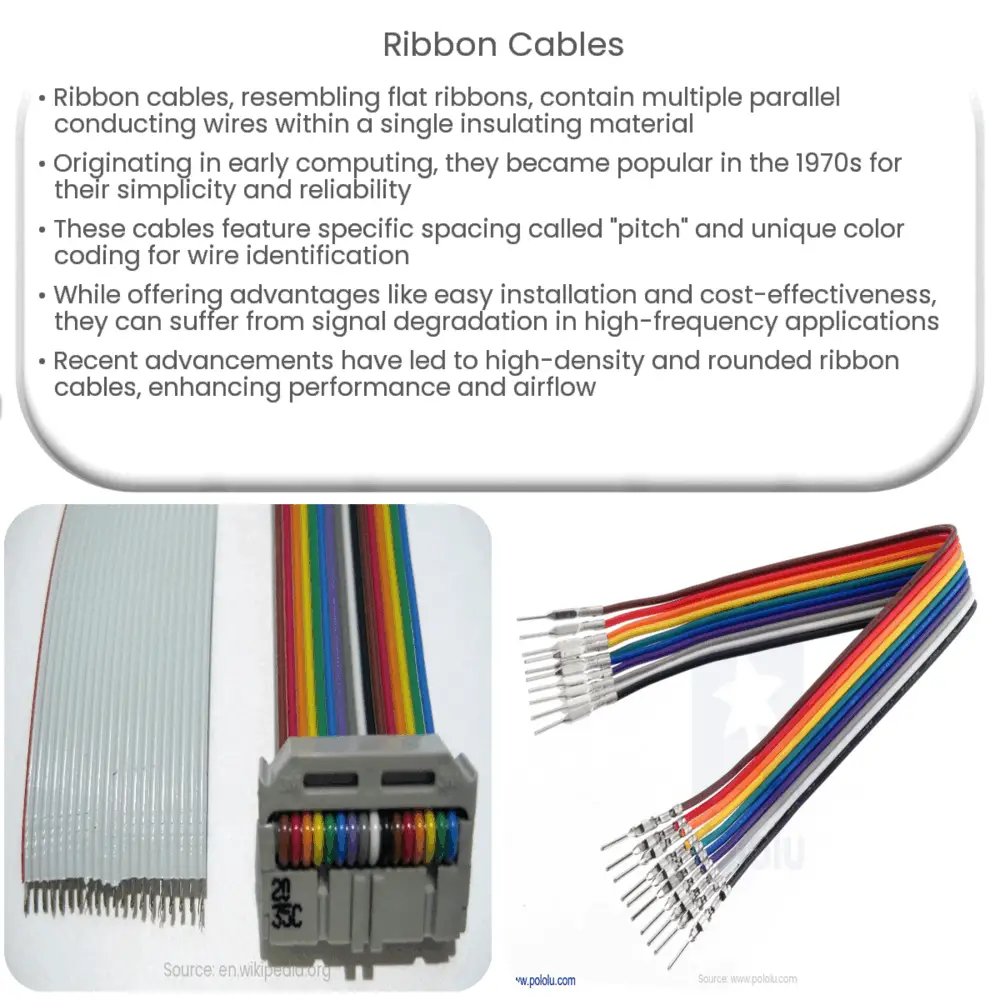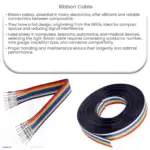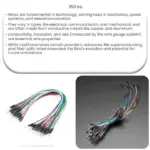Explore the world of ribbon cables: their history, structure, applications, advantages, and limitations, along with recent advancements.

Introduction to Ribbon Cables
A ribbon cable, also known as a multi-wire planar cable, is a unique type of cable distinguished by its appearance and construction. At first glance, it seems to resemble a flat, wide strip of plastic, akin to a ribbon, hence its name. Upon closer inspection, however, you’ll discover it contains multiple conducting wires running parallel to each other on the same flat plane, encapsulated within a single, usually flexible, insulating material.
Historical Perspective of Ribbon Cables
The history of ribbon cables traces back to the early days of computing and data transfer. Their use became prevalent during the 1970s as they found a significant role in connecting internal components of mainframe computers and minicomputers. Owing to their simplicity, reliability, and ease of installation, they quickly became a popular choice for manufacturers and developers.
Structure and Design of Ribbon Cables
The design of ribbon cables is elegantly straightforward, yet its effectiveness cannot be overstated. The flat form factor allows each conducting wire to maintain a fixed, uniform distance from its adjacent wires, reducing the potential for signal interference. This consistent spacing is often referred to as pitch in technical jargon. The pitch, usually measured in millimeters, plays a pivotal role in determining the performance of a ribbon cable.
- Pitch: The pitch or the spacing between the wires in a ribbon cable typically ranges from 0.05 inches (1.27mm) to 0.1 inches (2.54mm). This specific spacing is intentional, allowing the cable to fit standard connectors.
- Color Coding: One noteworthy feature of ribbon cables is their color coding, often referred to as “rainbow cables. Each wire within the cable is a different color, simplifying identification and connection to the correct pins.
- Material: The conductors in a ribbon cable are usually made of tinned copper wire, while the insulation is often PVC, offering a balance of flexibility, durability, and effective insulation.
Uses of Ribbon Cables
Ribbon cables have found widespread applications in electronics and computer hardware due to their convenient form factor and high reliability. They are most commonly seen in older computer systems for connecting disk drives to the motherboard, but their versatility extends much further.
In the next section of this article, we will delve deeper into the applications of ribbon cables, their advantages, and limitations, and the recent advancements in ribbon cable technology.
Applications of Ribbon Cables
Ribbon cables have found a multitude of uses in various sectors. In addition to their prevalent use in computer systems, they are also employed in industrial machines, medical devices, telecommunication systems, and automotive electronics. As an example, in automobiles, ribbon cables are often used for airbag systems, demonstrating their adaptability to different fields.
Advantages and Limitations
- Advantages: Ribbon cables offer a host of advantages such as simplicity, ease of installation, and flexibility. Their flat configuration allows for easy routing in tight spaces and the color coding aids in identifying connections quickly and accurately. They are also cost-effective and reliable, making them a favorable choice in various applications.
- Limitations: While they have many benefits, ribbon cables also have some limitations. They are not ideal for high-frequency applications due to signal degradation caused by crosstalk between parallel wires. Additionally, their wide structure can limit airflow in compact systems, potentially causing overheating issues.
Recent Advancements
In recent years, technological advancements have led to the evolution of ribbon cables. Manufacturers are now producing high-density ribbon cables capable of supporting higher bandwidths, offering improved performance. Furthermore, to tackle the limitation of limited airflow, rounded ribbon cables have been introduced that provide the same functionality but with a smaller footprint, reducing the blockage of airflow.
Conclusion
In conclusion, ribbon cables have played a significant role in the world of electronics and computing. Their distinctive structure, ease of use, and versatility have contributed to their widespread adoption across various industries. Despite facing some limitations, advancements in technology have helped them adapt and continue to be a relevant component in contemporary systems. As technology evolves, it is expected that ribbon cables will continue to adapt and remain a staple in the electronics industry.




